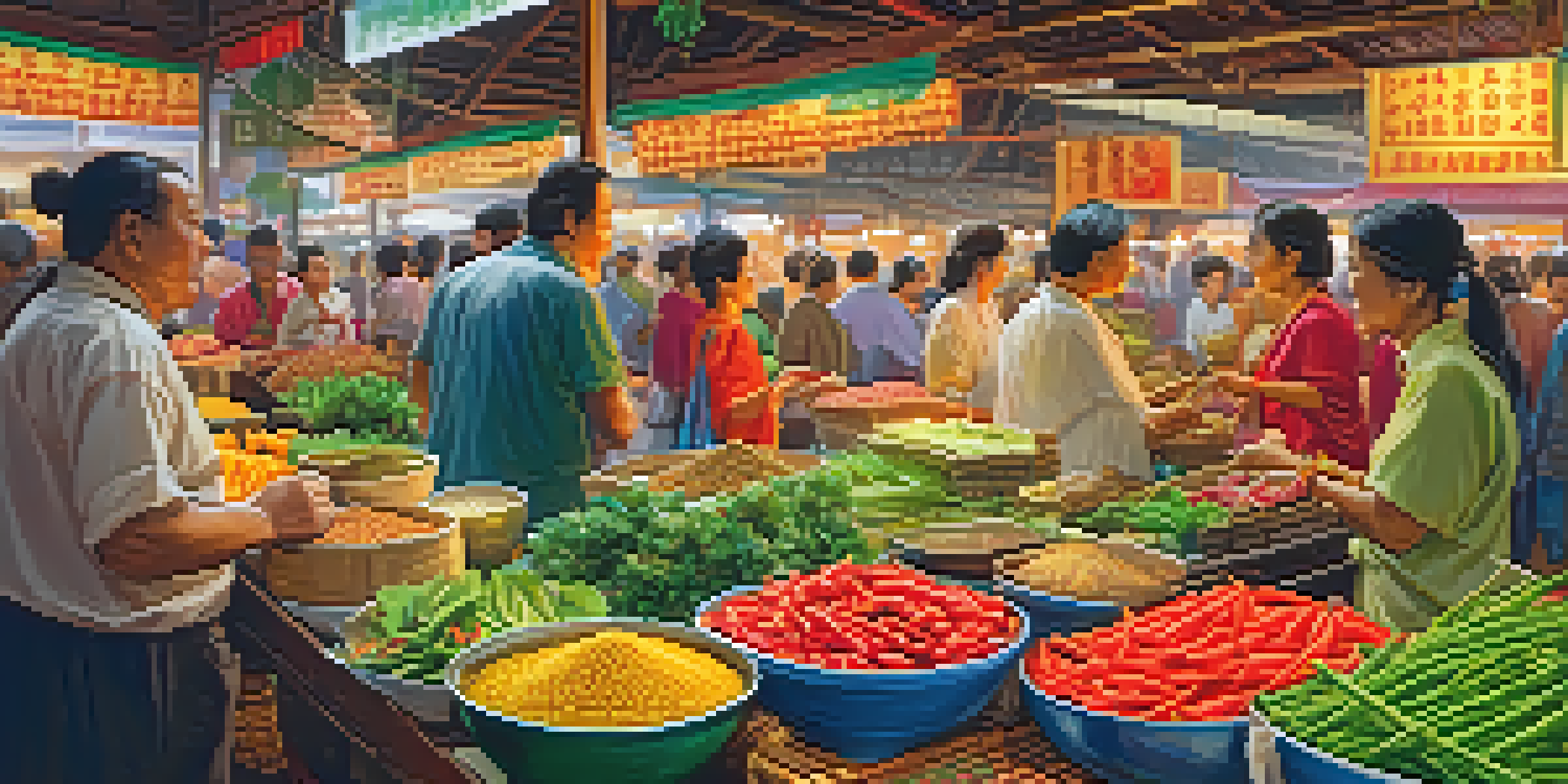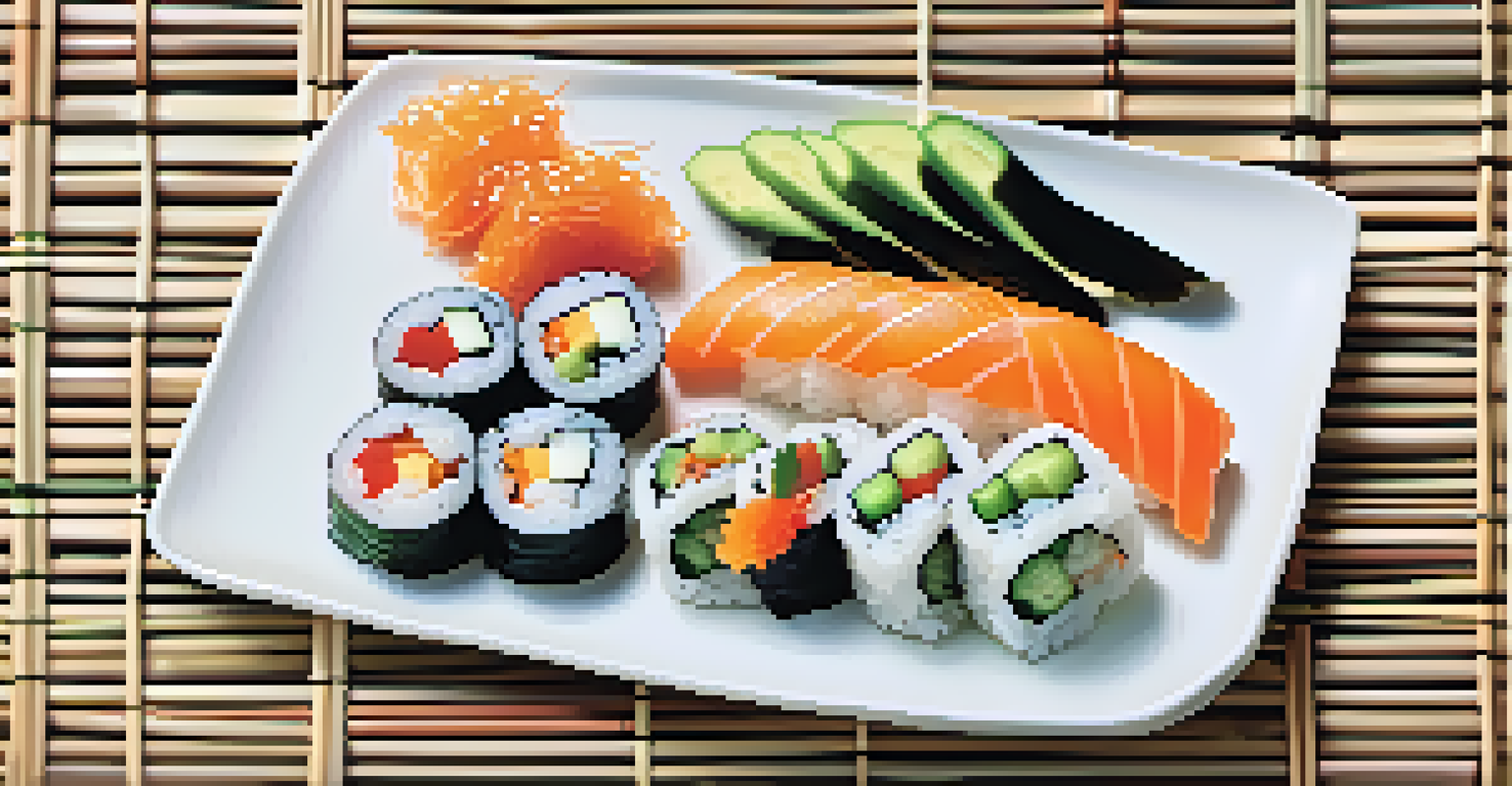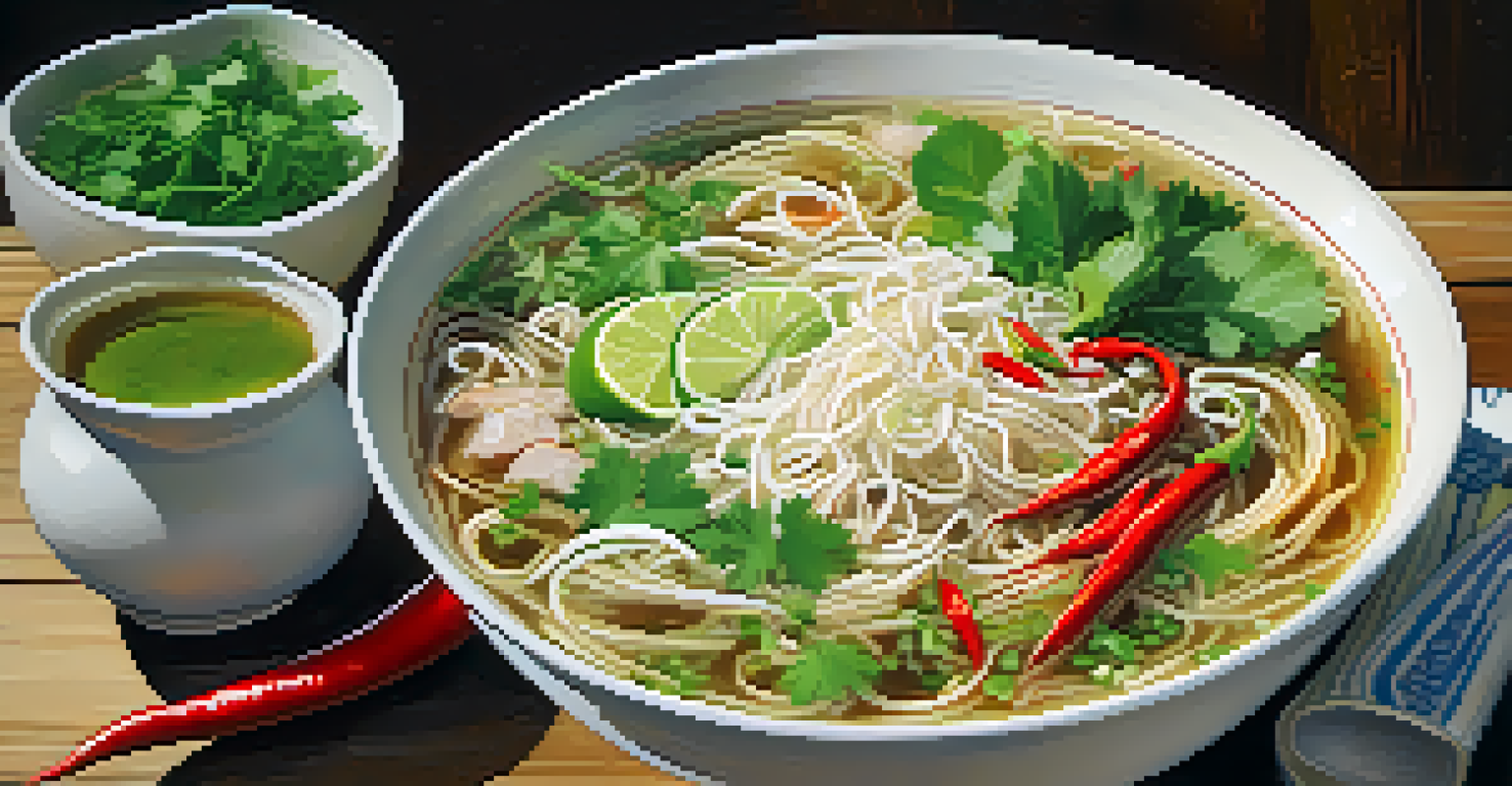Asian Vegetarian Cuisine: A Fusion of Flavors and Culture

Introduction to Asian Vegetarian Cuisine and Its Diversity
Asian vegetarian cuisine is a vibrant tapestry woven from various cultures, each offering unique flavors and ingredients. From the spicy curries of India to the delicate sushi of Japan, this culinary world is rich with diversity. It caters not only to vegetarians but also to anyone seeking fresh, wholesome food that bursts with flavor.
Let food be thy medicine and medicine be thy food.
The roots of vegetarianism in Asia stretch back centuries, often linked to cultural and spiritual beliefs. Many Asian religions, including Buddhism and Hinduism, promote a vegetarian lifestyle, emphasizing compassion for all living beings. This has led to the development of countless vegetarian dishes that are as delicious as they are meaningful.
As we explore this cuisine, we discover how local ingredients and traditional cooking methods contribute to the distinctive flavors. Whether it's the use of tofu in Chinese stir-fries or the variety of lentils in Indian dal, the creativity in Asian vegetarian cooking is boundless.
Key Ingredients in Asian Vegetarian Cooking
At the heart of Asian vegetarian cuisine are a few key ingredients that define its flavor profiles. Staples like rice, noodles, and a variety of vegetables create a solid foundation for countless dishes. These ingredients are not just basic; they are often infused with bold spices and herbs that elevate the overall taste experience.

For example, in Thai cuisine, fresh basil, lemongrass, and chili peppers are commonly used to create aromatic dishes that tantalize the taste buds. Similarly, Indian cooking relies on a myriad of spices, such as cumin and coriander, to add depth and warmth to vegetarian meals. Each ingredient tells a story of its origin and cultural significance.
Diverse Flavors in Vegetarian Cuisine
Asian vegetarian cuisine showcases a vibrant variety of flavors and ingredients influenced by cultural and regional differences.
Moreover, proteins like tofu, tempeh, and legumes play a vital role in ensuring that vegetarian dishes are both satisfying and nutritious. They not only provide essential nutrients but also absorb the flavors of the spices and sauces, making every bite a delightful journey.
Regional Variations in Vegetarian Dishes Across Asia
One of the most exciting aspects of Asian vegetarian cuisine is the regional variations that reflect local customs and available ingredients. In India, for instance, you'll find an array of lentil-based dishes, like dal and sambar, that are rich in flavor and protein. Each state has its own specialties, showcasing the country's culinary diversity.
You are what you eat, so don't be fast, cheap, easy, or fake.
In contrast, Japanese cuisine often embraces simplicity with dishes like vegetable tempura or miso soup, emphasizing the natural flavors of fresh ingredients. The presentation is as important as the taste, making meals a visual delight. This attention to detail is a hallmark of Japanese culture, extending even to vegetarian fare.
Meanwhile, in Southeast Asia, countries like Vietnam and Thailand offer vibrant street food options, such as pho with tofu or green curry with vegetables. These dishes are often served with fresh herbs and lime, adding brightness and a refreshing element to the meal. This regional diversity makes exploring Asian vegetarian cuisine a never-ending adventure.
Health Benefits of Asian Vegetarian Cuisine
In addition to being delicious, Asian vegetarian cuisine is often packed with health benefits. Many dishes are rich in vitamins, minerals, and antioxidants, thanks to the abundance of fresh vegetables and whole grains. This focus on plant-based ingredients can contribute to a balanced diet and promote overall well-being.
Moreover, traditional cooking methods, such as steaming and stir-frying, help retain nutrients while minimizing the use of unhealthy fats. For instance, steaming vegetables not only preserves their vibrant colors but also their essential nutrients. This approach to cooking aligns with the principles of healthy eating.
Health Benefits of Plant-Based Eating
Many Asian vegetarian dishes offer numerous health benefits, being rich in nutrients and aligned with healthy cooking methods.
Additionally, research has shown that plant-based diets can lower the risk of chronic diseases, such as heart disease and diabetes. By embracing Asian vegetarian cuisine, individuals can enjoy flavorful meals that are not only satisfying but also support a healthier lifestyle.
Cooking Techniques for Asian Vegetarian Dishes
Cooking techniques play a crucial role in bringing the flavors of Asian vegetarian dishes to life. Stir-frying, for example, is a popular method that involves quickly cooking ingredients over high heat. This technique helps maintain the crunchiness of vegetables while infusing them with the flavors of sauces and spices.
Another important technique is steaming, which preserves the nutrients and natural flavors of the ingredients. Foods like dumplings and vegetables are often steamed to achieve a tender texture without losing their vibrant colors. This method is not only healthy but also showcases the beauty of the ingredients.
Lastly, marinating is a key step in enhancing flavor profiles. Whether it's tofu soaked in soy sauce or vegetables tossed in a tangy dressing, marination allows the ingredients to absorb the rich tastes and aromas, making the final dish even more delectable.
Cultural Significance of Vegetarianism in Asia
Vegetarianism in Asia is deeply intertwined with cultural and spiritual beliefs, often reflecting the values of compassion and respect for life. In many Asian cultures, avoiding meat is seen as a way to cultivate mindfulness and promote harmony with nature. This philosophy influences not only dietary choices but also culinary practices.
Festivals and religious observances often feature vegetarian meals, showcasing the importance of plant-based eating in various traditions. For instance, during the Chinese Vegetarian Festival, an array of colorful dishes is prepared, highlighting the creativity and variety of vegetarian cuisine. This communal aspect of sharing meals strengthens social bonds and cultural identity.
Cultural Roots of Vegetarianism
Vegetarianism in Asia is deeply rooted in cultural and spiritual beliefs, promoting compassion and mindfulness through plant-based eating.
Additionally, the emphasis on vegetarianism has led to a rich culinary heritage that celebrates sustainability and environmental consciousness. As more people embrace plant-based diets worldwide, the cultural significance of vegetarianism in Asia serves as a guiding light for those seeking to connect with nature and their food.
Exploring Asian Vegetarian Cuisine at Home
Bringing the flavors of Asian vegetarian cuisine into your home can be a rewarding experience. Start by exploring local Asian markets for fresh produce, spices, and specialty ingredients that can elevate your cooking. These markets often carry unique items that aren't found in regular grocery stores, allowing you to experiment with authentic recipes.
Begin with simple dishes, such as stir-fried vegetables or a comforting bowl of noodle soup. As you gain confidence, try your hand at more complex recipes, like curry or dumplings. Don’t hesitate to adapt traditional recipes to your taste, incorporating your favorite vegetables or flavors to make each dish your own.

Lastly, cooking Asian vegetarian meals can be a fun activity to share with friends and family. Invite loved ones over for a cooking night, where everyone can participate in preparing and enjoying delicious, healthy dishes together. This not only fosters a sense of community but also deepens your appreciation for the rich tapestry of Asian vegetarian cuisine.